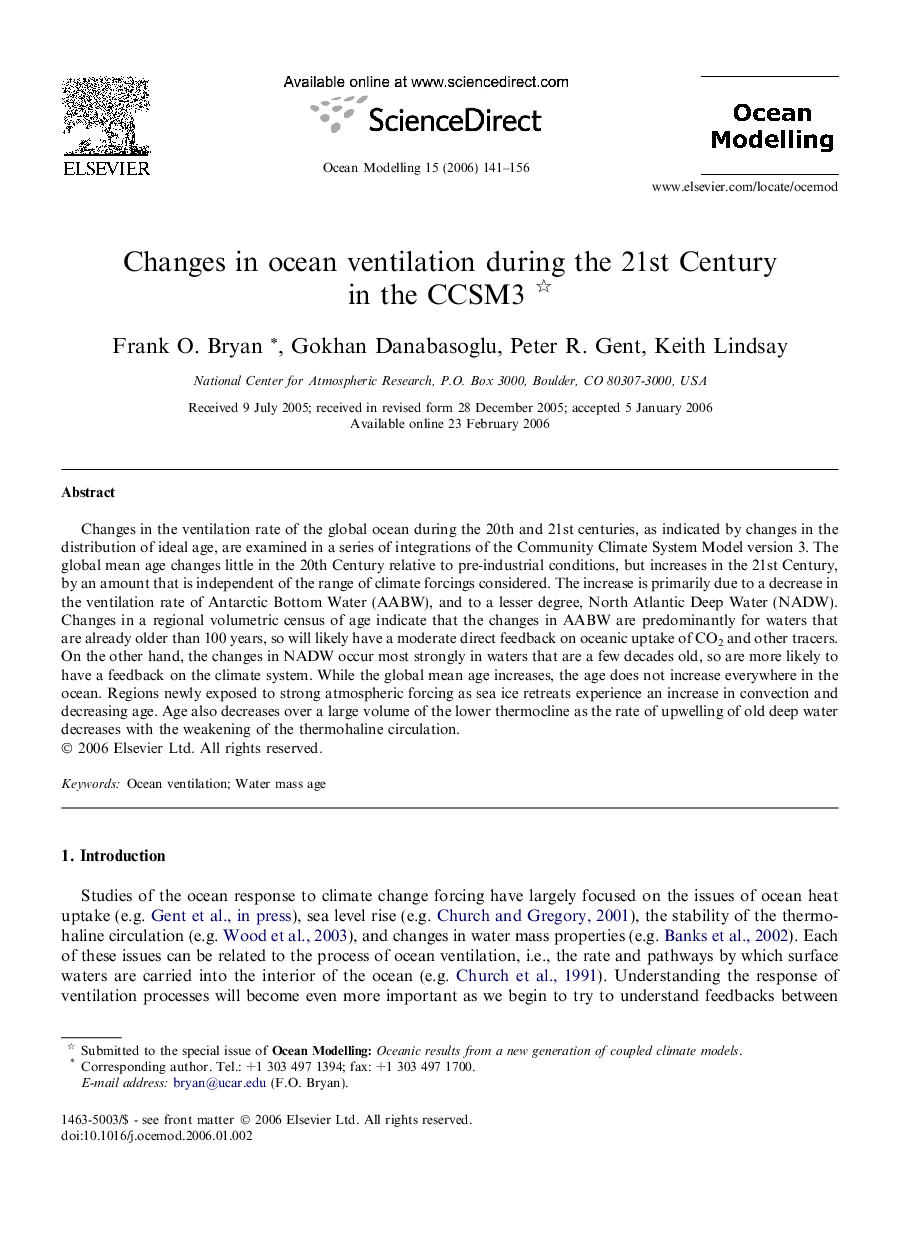| Article ID | Journal | Published Year | Pages | File Type |
|---|---|---|---|---|
| 4552869 | Ocean Modelling | 2006 | 16 Pages |
Changes in the ventilation rate of the global ocean during the 20th and 21st centuries, as indicated by changes in the distribution of ideal age, are examined in a series of integrations of the Community Climate System Model version 3. The global mean age changes little in the 20th Century relative to pre-industrial conditions, but increases in the 21st Century, by an amount that is independent of the range of climate forcings considered. The increase is primarily due to a decrease in the ventilation rate of Antarctic Bottom Water (AABW), and to a lesser degree, North Atlantic Deep Water (NADW). Changes in a regional volumetric census of age indicate that the changes in AABW are predominantly for waters that are already older than 100 years, so will likely have a moderate direct feedback on oceanic uptake of CO2 and other tracers. On the other hand, the changes in NADW occur most strongly in waters that are a few decades old, so are more likely to have a feedback on the climate system. While the global mean age increases, the age does not increase everywhere in the ocean. Regions newly exposed to strong atmospheric forcing as sea ice retreats experience an increase in convection and decreasing age. Age also decreases over a large volume of the lower thermocline as the rate of upwelling of old deep water decreases with the weakening of the thermohaline circulation.
